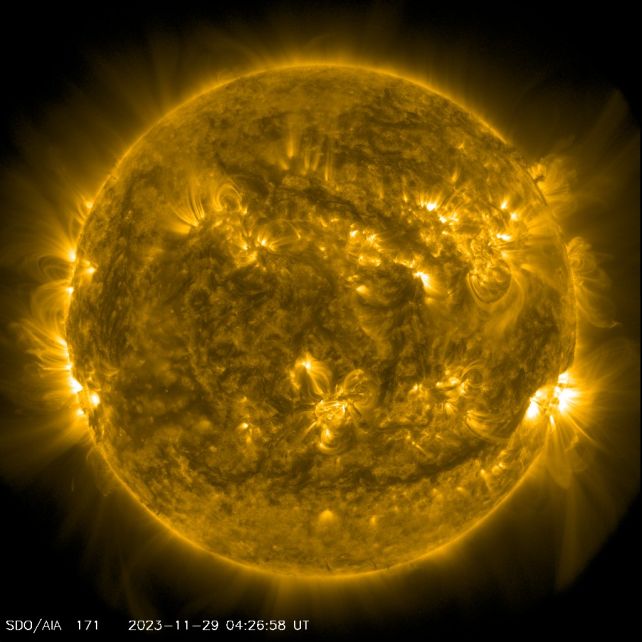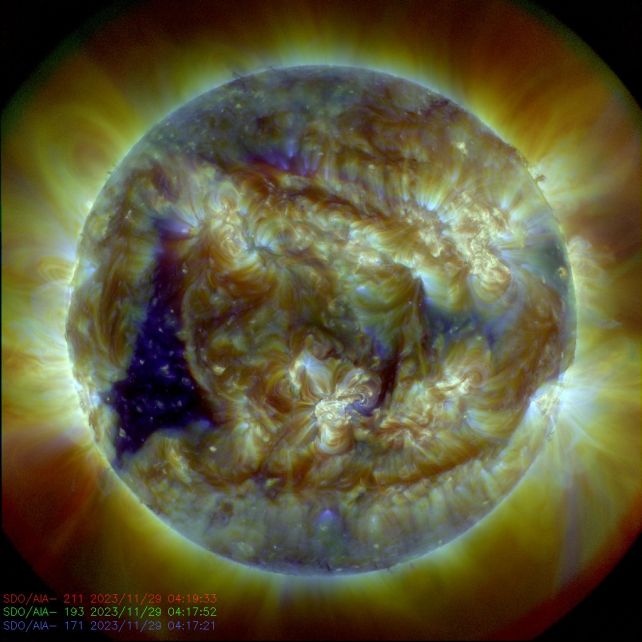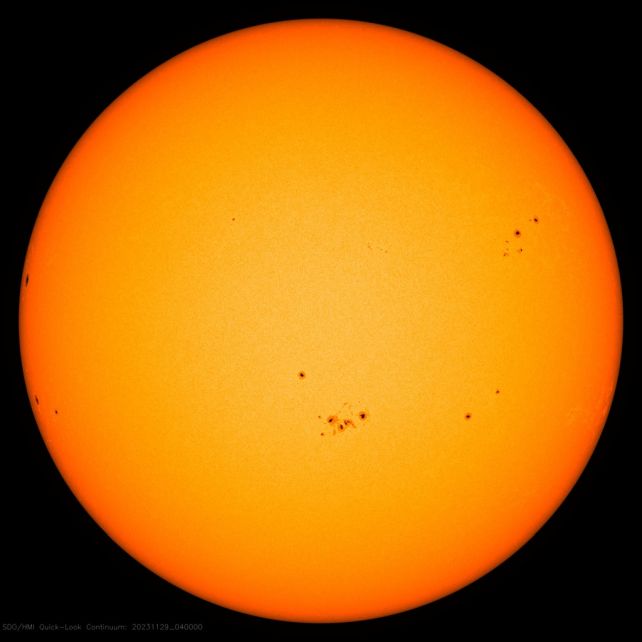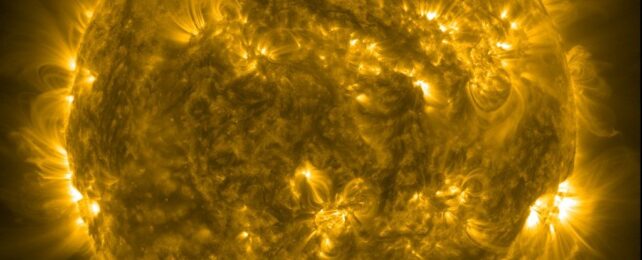A new study has found that the impending peak in the Sun's activity cycle will likely arrive significantly sooner than previously predicted.
According to an analysis by astrophysicists Priyansh Jaswal, Chitradeep Saha, and Dibyendu Nandy at the Center of Excellence in Space Sciences India, solar maximum is likely to hit in January 2024.
This is much, much sooner than the initial official prediction, which found solar maximum would take place in July 2025.
The finding suggests that there may be better ways of predicting the Sun's behavior than the methods used for the official predictions for the current solar cycle, solar cycle 25.
Solar cycles are somewhat mysterious – it's not entirely clear what drives them – but they are very normal.
Simply put, every 11 years or so, the Sun's magnetic field reverses polarity. This is accompanied by a rise and fall of solar activity – sunspots, solar flares, and coronal mass ejections.

The point at which the poles switch places is known as solar maximum, characterized by a peak in activity. Solar minimum follows several years later; the Sun deescalates its activity before ramping up to the next maximum.
We track and predict when this will occur based on the number of sunspots that speckle the face of the Sun. However, this method has never been an exact science; we know roughly when solar maximum will occur, but official predictions are more of an estimate than a precision pinpoint.
The last solar minimum, marking the end of solar cycle 24, took place in 2019. Solar cycle 24 was relatively quiet, as solar cycles go; the NOAA prediction was that solar cycle 25 would follow suit, with subdued activity, and a peak in July 2025.

Nothing has gone according to that prediction.
Since solar activity started climbing, it has vastly exceeded official predictions; solar cycle 25 is proving to be one of the strongest since we started recording solar cycles back in 1755, and solar activity in the last few years has been tremendously exciting to follow.
Some scientists called it. Robert Leamon of NASA and Scott McIntosh of the US National Centre for Atmospheric Research predicted that solar maximum would be stronger than others believed, and take place in mid to late 2024. Last month, the NOAA revised its prediction, announcing that the maximum is now expected between January and October of 2024.
We've been getting by pretty well so far, but solar activity is tied to space weather – eruptions from the Sun can have an impact on Earth, and while our recourse is limited, there might still be ways to try and protect ourselves. So more accurate predictions of the solar cycles would be a nice thing to have.
Leamon and McIntosh based their analysis of the Sun on its internal magnetic activity, tracing larger patterns of behavior back over a long period of time. Jaswal and his colleagues have done something similar, studying decades-old data and linking magnetic activity to something known as the Waldmeier effect.

Formulated in 1935, the Waldmeier effect relates to sunspots and the length of the solar cycle. Basically, the faster sunspot activity ramps up, the faster solar maximum arrives. So, the stronger the cycle, the shorter it is.
Jaswal and his team looked at the rate at which the Sun's poles weaken, studying data that dates back to 1976. They found that the rate of decay of the solar dipole correlates very neatly with the Waldmeier effect.
This means that they could use the Waldmeier effect to predict when the polar magnetic fields would weaken to zero and switch places – solar maximum.
Their findings predicted a timeframe around January 2024. There's still some uncertainty and wiggle room, but if solar maximum takes place at this time, we'll know that they're onto something.
In all, however, the evidence so far suggests that we need to be looking more closely at the Sun's magnetic activity, rather than just what's happening on the surface.
The team's research has been published in the Monthly Notices of the Royal Astronomical Society Letters.
